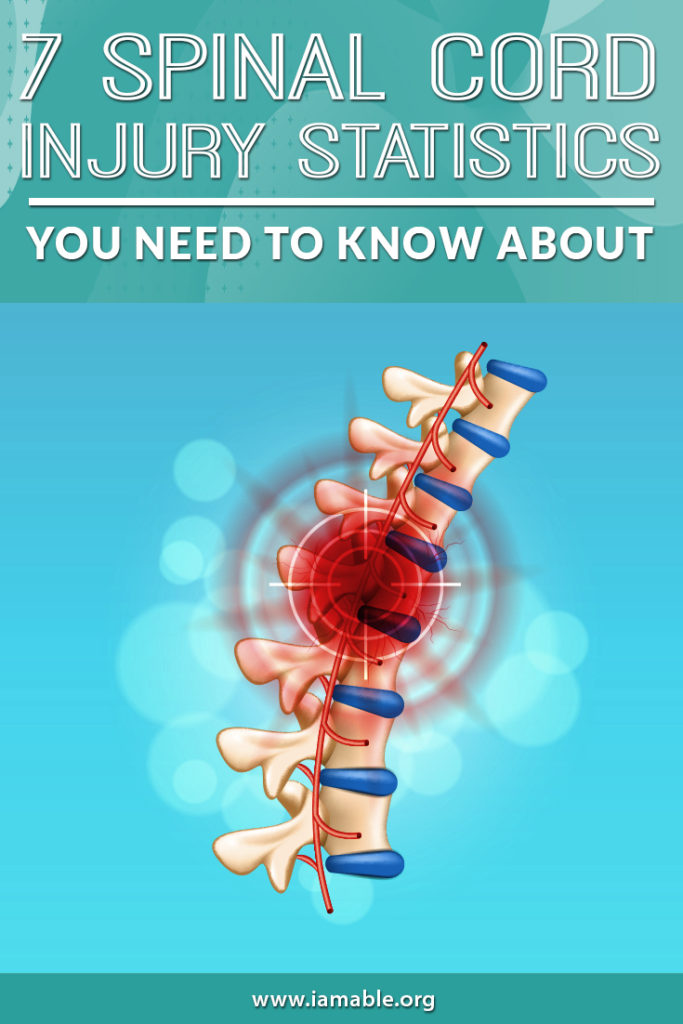Miami, FL 33186

Your spinal cord injury recovery center will play a major role in your attempts to retain the highest degree of independence. Besides your rehabilitation routine, there are many other things you do to help your health improve. For example, one way to give attention to your mental health is to consider spinal cord injury statistics. Knowing that you are not alone can provide you with the encouragement you need to keep going with your challenging recovery journey. Here are some vital SCI stats for you to think about.
They are extremely common. In fact, the World Health Organization (WHO) states that somewhere between a quarter million and a half million people experience an SCI each year. As much as 90% of all spinal cord injury causes are trauma. For example, many SCIs occur during traffic accidents. On the other hand, there can also be degenerative causes of spinal cord injury, and the WHO believes the percentage of this type of case is increasing.
As we already mentioned, motor vehicle accidents are the number one cause of spinal cord injuries, at least in the US. More than one-third of all SCI trauma stems from car accidents. The next most common cause is falls. Additional causes include violent assaults, sports injuries, and medical accidents. While far less common, cancer, infections, diseases, and congenital disabilities can also result in spinal cord injuries.
The WHO also reports that 90% or more of SCIs are preventable. So who should be on guard the most? First of all, men are at far higher risk than women, with nearly 4 in 5 new spinal cord injuries occurring in males. Second, the average age of injury is 43 years old. This has steadily increased over the years as middle-aged individuals are staying active in higher-risk activities. Caucasians are the most affected race, with nearly two-thirds of new cases occurring in white people.
Before we mention this number, keep in mind that it should not discourage you. We are only speaking about the percentages when it comes to time spent in the hospital immediately following the injury. With hard work and the right spinal cord injury recovery center, you can make a lot of progress in the months or even years following your injury. With that in mind, the percent of SCI survivors who make a complete recovery in the hospital is 0.8%.
The most common extent of lesion following an SCI is incomplete tetraplegia, with 47.2% of survivors leaving the hospital with this degree of neurological damage. A person with incomplete tetraplegia may have complete paraplegia but still retain partial use of the upper limbs. This means that recovery will have to focus intensely on the entire body to maximize results.
Early on, a person’s focus will rightfully be on optimizing their recovery. Between this and adjusting to a new lifestyle, it makes sense that only about 12% of SCI survivors are employed one year after the injury. However, as a person makes adjustments and reaches rehabilitation goals, the employment rate goes up. By 20 years after the injury, one in three SCI survivors will have employment (this is not as bad when you consider that only 57% have work, on average, at the time of their injury).
Life expectancy for an SCI survivor increases the more time passes after the injury. For example, a 40-year-old who survived an SCI with paraplegia has a life expectancy of age 69.7. However, one year after the injury, that life expectancy goes up to 70.2. It is still less than average, unfortunately. Yet, you can potentially live a very full life following an SCI, so do not give up hope. Work hard with your spinal cord injury recovery center to ensure your remaining years can be as full as possible.
In a 2012 study on activity-based therapy (ABT), the results included a significant improvement in ASIA impairment scores for SCI patients. In fact, it almost seems there was a direct correlation between the number of hours of intense exercise per week that an SCI survivor performs and the overall functional recovery. This is excellent news! It shows that you can regain much of your independence by putting in the work.
However, you also want to find the best spinal cord injury recovery center because not every facility will have the same activity-based therapy program. Look for a healthy mix of physical and occupational therapy and modern treatments like FES and Lokomat therapy. For example, in southern Florida, iAM ABLE features all of these key therapy types and more. At the same time, you need to gear yourself up mentally for the journey so that you help your progress along. To that end, we suggest reading our eBook 7 Unbelievably Important Steps to Take to Thrive after Paralysis. It can help you to accept your new circumstances and get you ready for the challenges and successes ahead.
Grab our free e-book 7 Unbelievably Important Steps to Take to THRIVE after Paralysis by clicking the image below.
